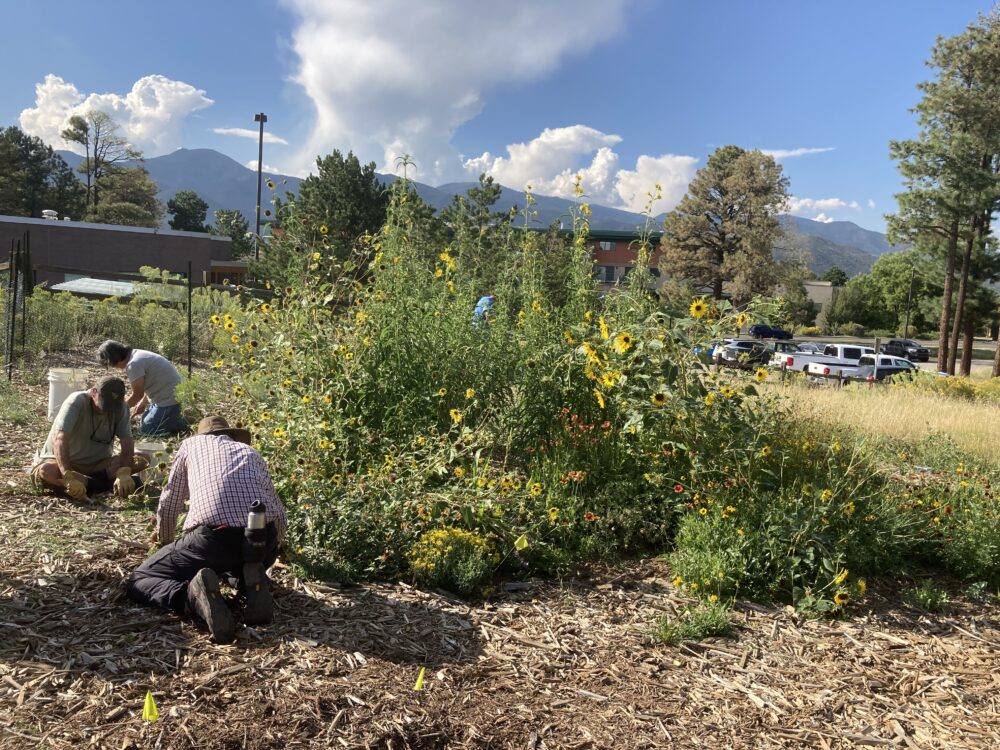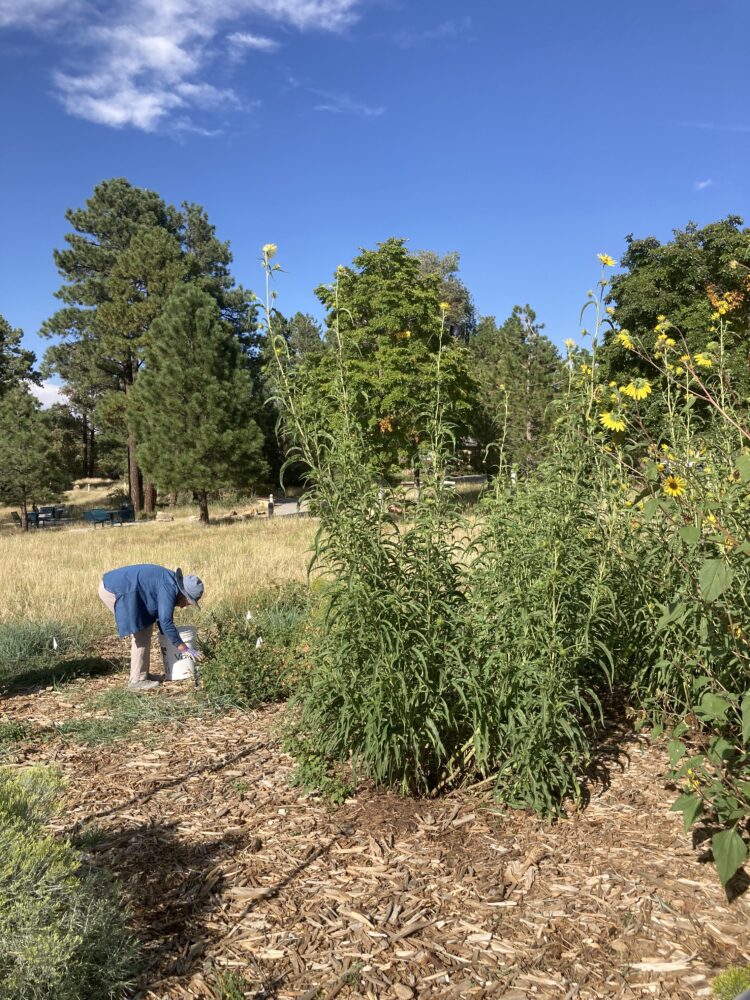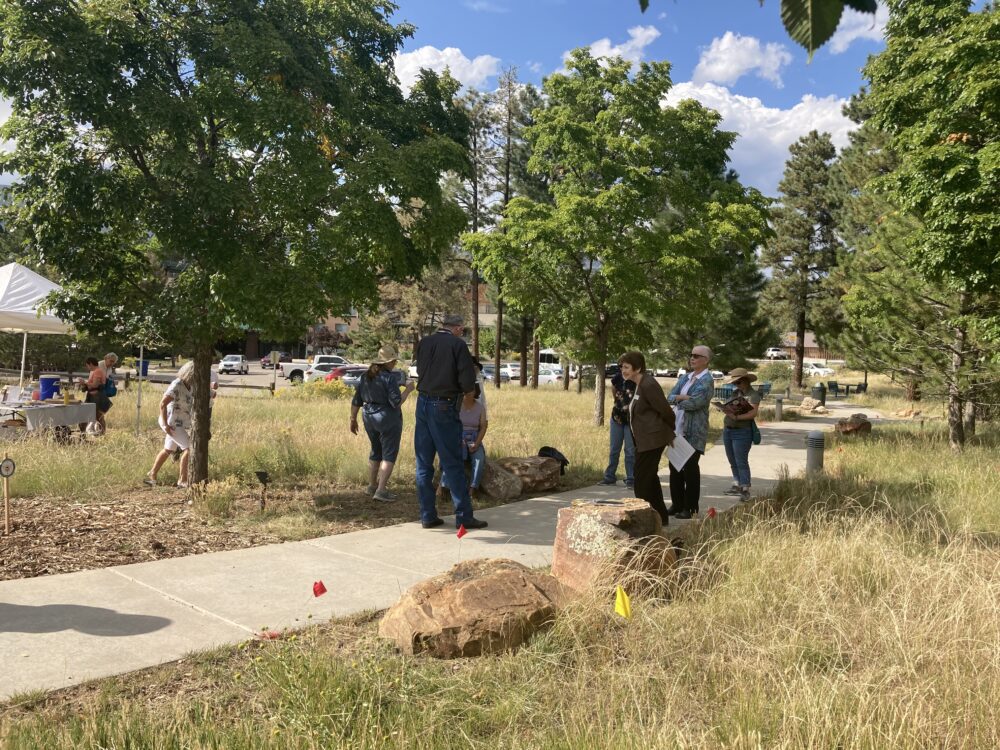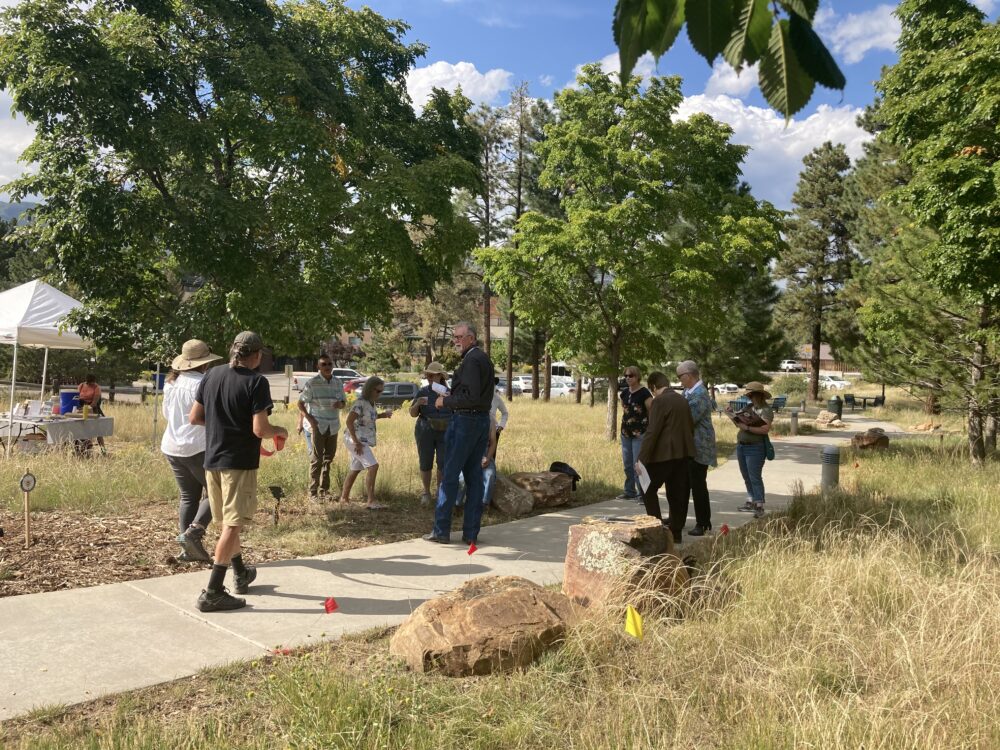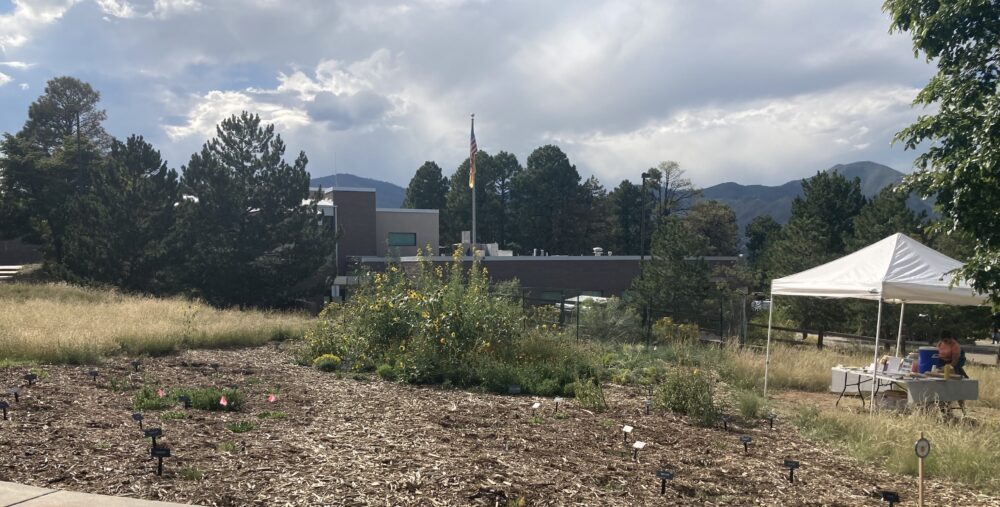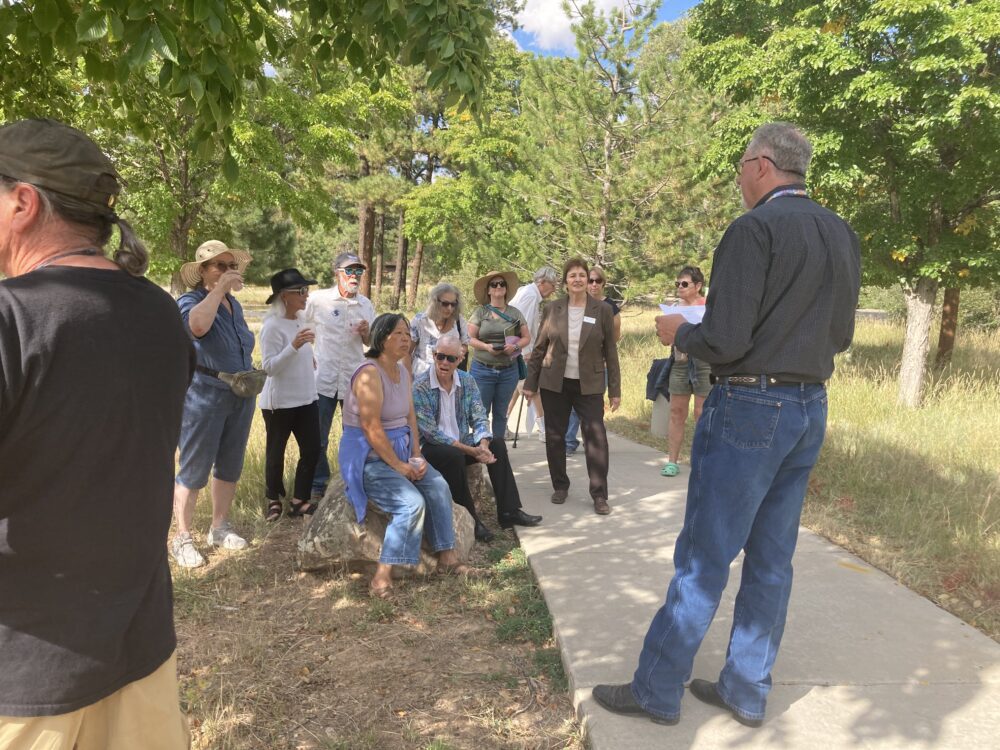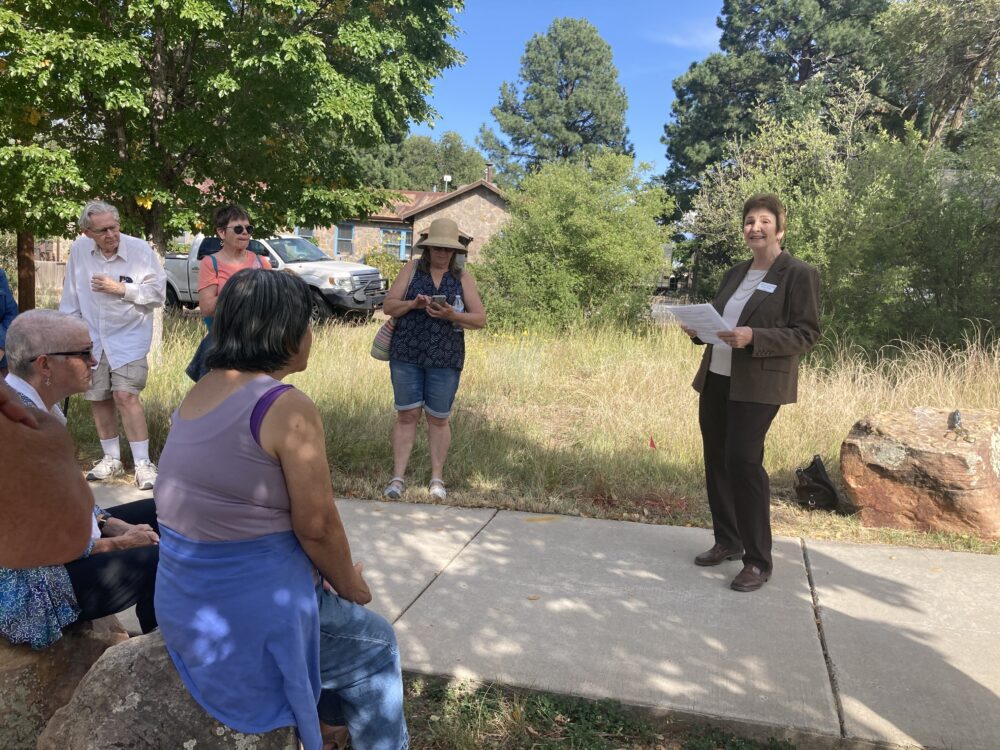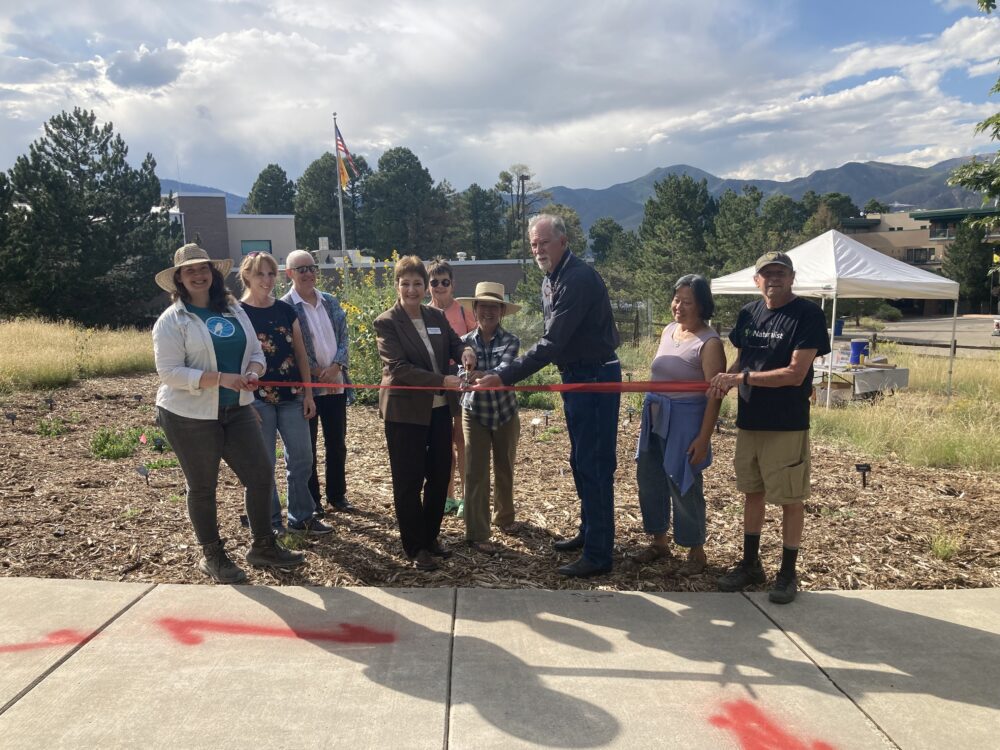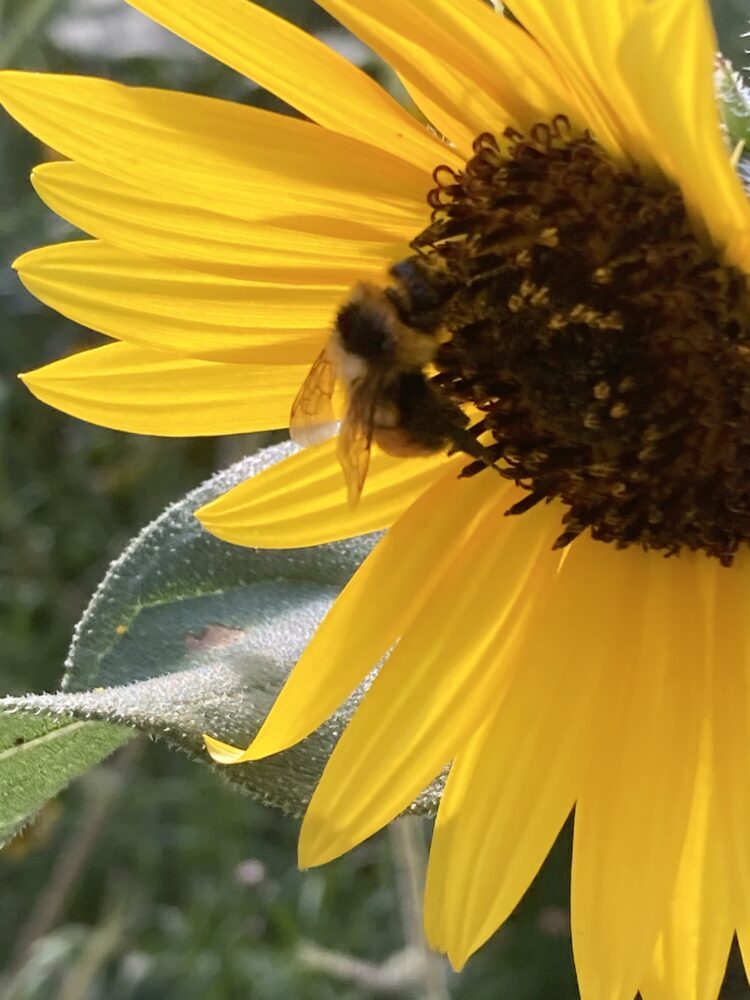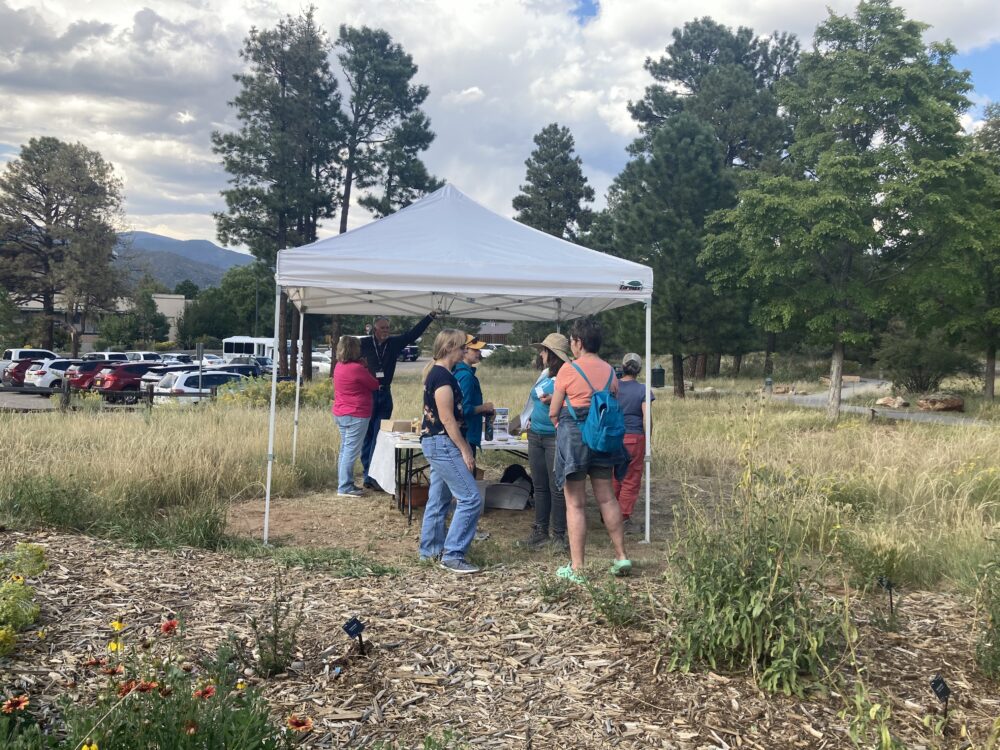Bee City Los Alamos is happy to partner with Pajarito Environmental Education Center to conduct a citizen science iNaturalist project designed to document and track native plants, local pollinators and the relationships between the two. As part of the Los Alamos County commitment to protecting and nurturing native pollinators, we have partnered with PEEC and Los Alamos County Parks & Recreation to create a Pollinator Demonstration Garden on Bathtub Row in Los Alamos.
To become involved with these exciting projects, please email us at: coordinator@beecitylosalamos.org. We can help you get set up on iNaturalist to start documenting any native plants and pollinators you see while out hiking, in your own yard and in the Demonstration Garden. We are always looking for volunteers to help us with weeding, watering, planting and monitoring the garden. Join our mailing list (form is at the bottom of the home page of the website) to be notified of volunteer days, plant give-aways and more.
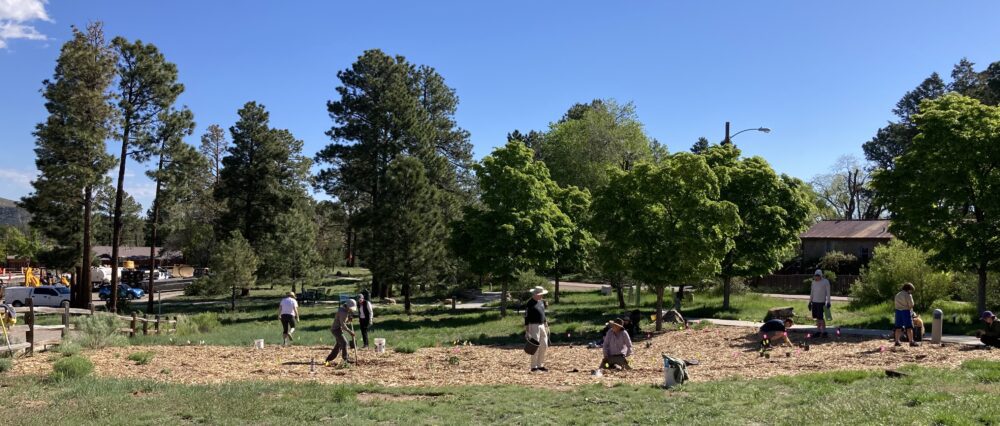
Volunteer day in the Pollinator Demonstration Garden May 2024 | Dana Ecelberger
You can find the garden on Bathtub Row behind the Extension Office and next to the Senior Center. This year marks the first step of a five-year project to transform this somewhat weedy open space on Bathtub Row into a pollinator paradise. Volunteers have turned out on three separate events to first mulch the area, then to help weed and plant native perennials donated by Plants of the Southwest, and most recently to plant shrubs and trees along the back fence. The area will demonstrate how homeowners, and municipalities, can incorporate native pollinator plants into landscapes of all sizes. The front area closest to the sidewalk has two perennials beds in a more formal arrangement, exemplifying what could be used by homeowners and high profile public areas, and which offer great nectar, pollen and habitat resources to our native bees. The plants in these beds are planted close together and in groups of like plants to help our native pollinators with efficient resource collection. Unlike honeybees, who can fly up to 5 miles to forage nectar and pollen, our native bees tend to stay within a few hundred yards of their nests. Most of our native bees are solitary, ground-dwelling bees so we have also included some areas that are not heavily mulched to make it easier for them to access the soil.
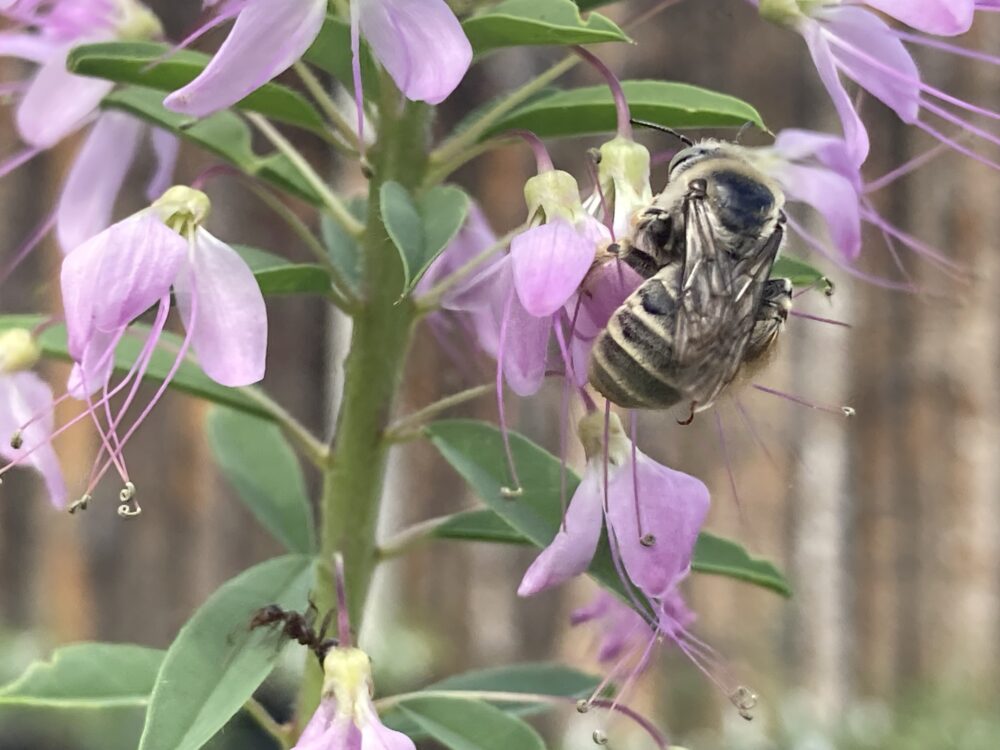

Native Alpine Bee and ant on Cleomella serrulata (Western Bee Plant) | Photo Dana Ecelberger
In the center area we sowed wildflower seeds, which are already blooming! This will be a small demonstration area of a seed sown wildflower meadow (we used the High Plains seed mix from Plants of the Southwest). Along the fence closest to the Senior Center we planted native shrubs Forestiera pubescens (New Mexico Privet), Cercocarpus montanus (Mountain Mahogany), Quercus gambelii (Gambel Oak) and Amelanchier alnifolia (Serviceberry). These shrubs provide resources and habitat for native pollinators and birds and are lovely choices for home and urban gardens. A generous grant from the Carroll Petrie Foundation made these shrubs and additional perennials possible for the second phase of planting.


The deer have discovered, and eaten ALL, of the tasty leaves on the Gambel Oak and Mountain Mahogany. We will try a home-made spray of garlic, water and peppermint oil sparingly used on the stems, remaining leaves and around the ground of the plants that are most impacted as a temporary scent deterrent to give the plants a chance to get established. Chemical pesticides and fertilizers should never be used in a pollinator garden. Homemade pesticides are also discouraged as they negatively impact native pollinators. Soaps are a common ingredient in home sprays; they work by suffocating the insect, and this applies to all soft-bodied insects and larvae, including our beneficials.
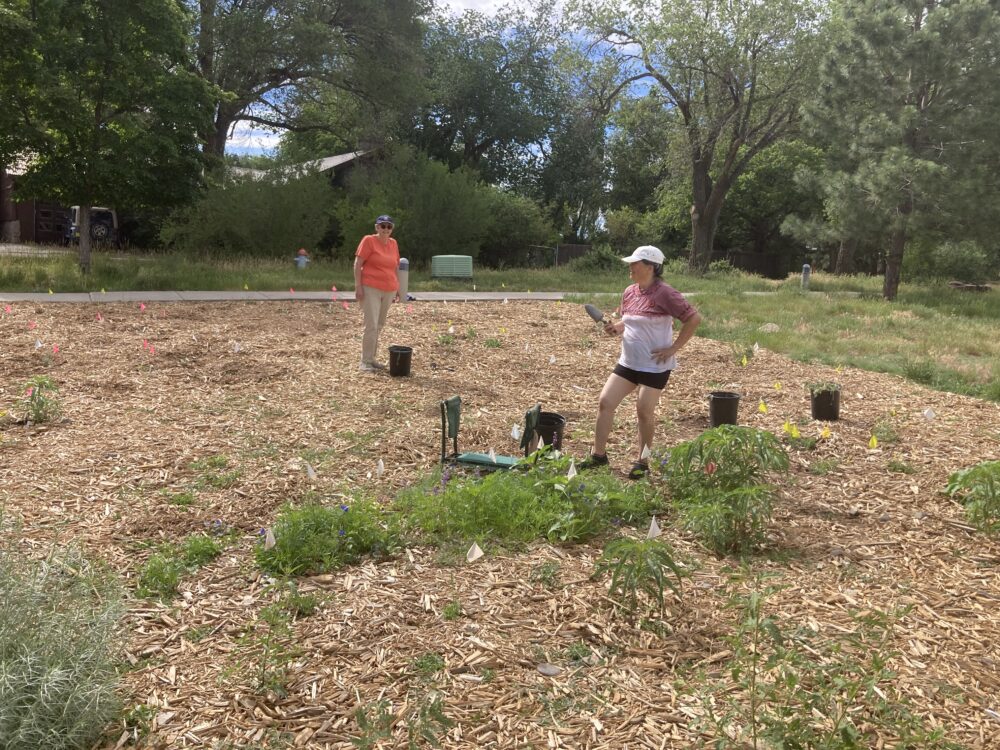

KokHeong McNaughton & Janine Fales weed the wildflower meadow area | Dana Ecelberger
We recently planted a new area along the fence with transplanted Asclepias speciosa (Showy Milkweed) salvaged from an accidental removal. We have our fingers crossed that they will recover and flourish along the fenceline.
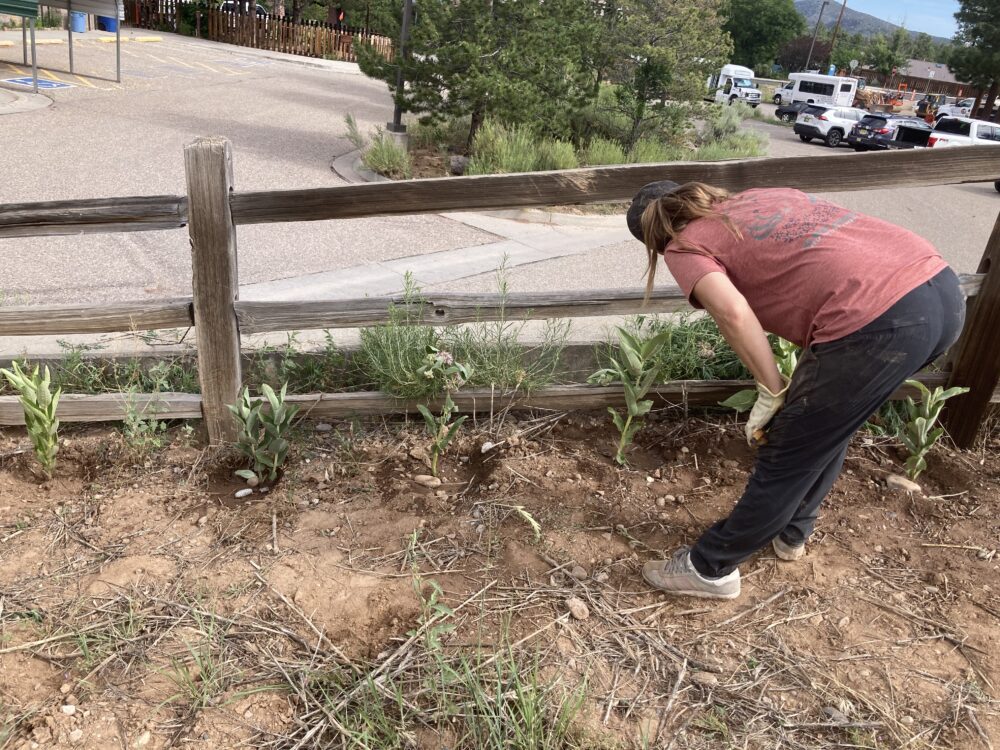

Wildlife biologist, Jenna Stanek, checks on Showy Milkweed transplants | June 2024 | Dana Ecelberger
Volunteers have been watering and weeding the area through the dry, hot Spring. We are always looking for more help with these ongoing tasks, and we will be looking for sharp eyes to take photos of pollinators as they show up to utilize the new plants. You can sign up to volunteer at: volunteerlosalamos.org
You can also contact us at: coordinator@beecitylosalamos.org, if you would like to get involved in this fun project.
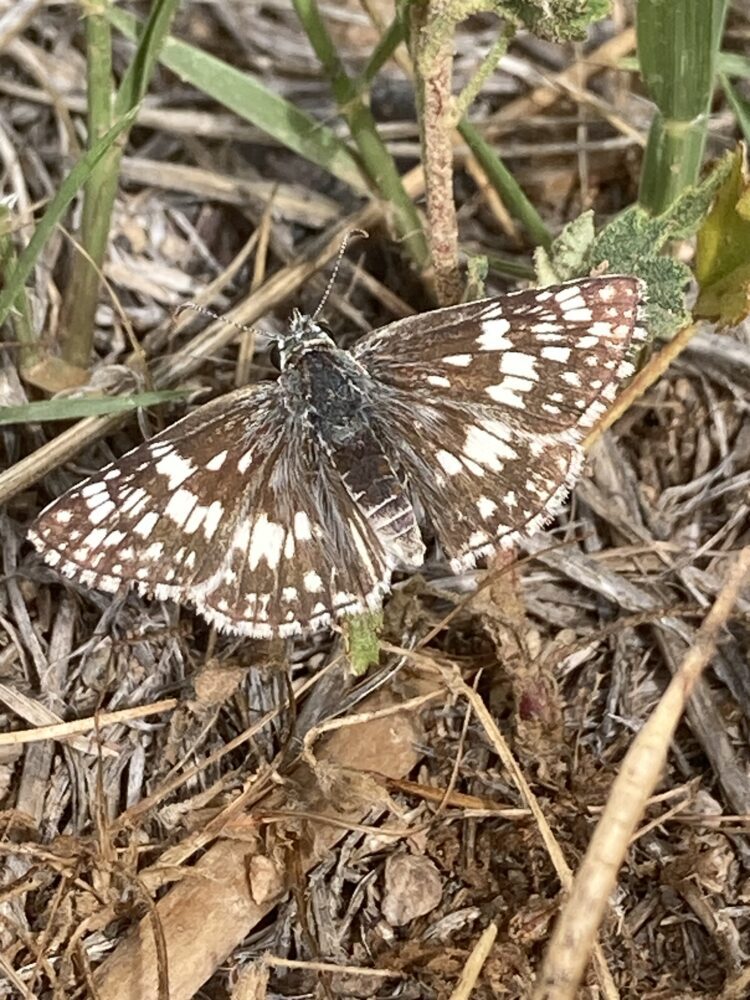

No Monarchs yet, but this Skipper showed up to help with the flowers | June 2024 | Dana Ecelberger
Los Alamos County Native Bee & Wasp List (this is a living document that will evolve over time as we collect more observations through our iNaturalist Citizen Science project. Join us today and help us identify and track our native pollinators!)
Thank you to everyone who participated in our Dedication Ceremony. We were so happy to have you all there to celebrate this first year with us!!
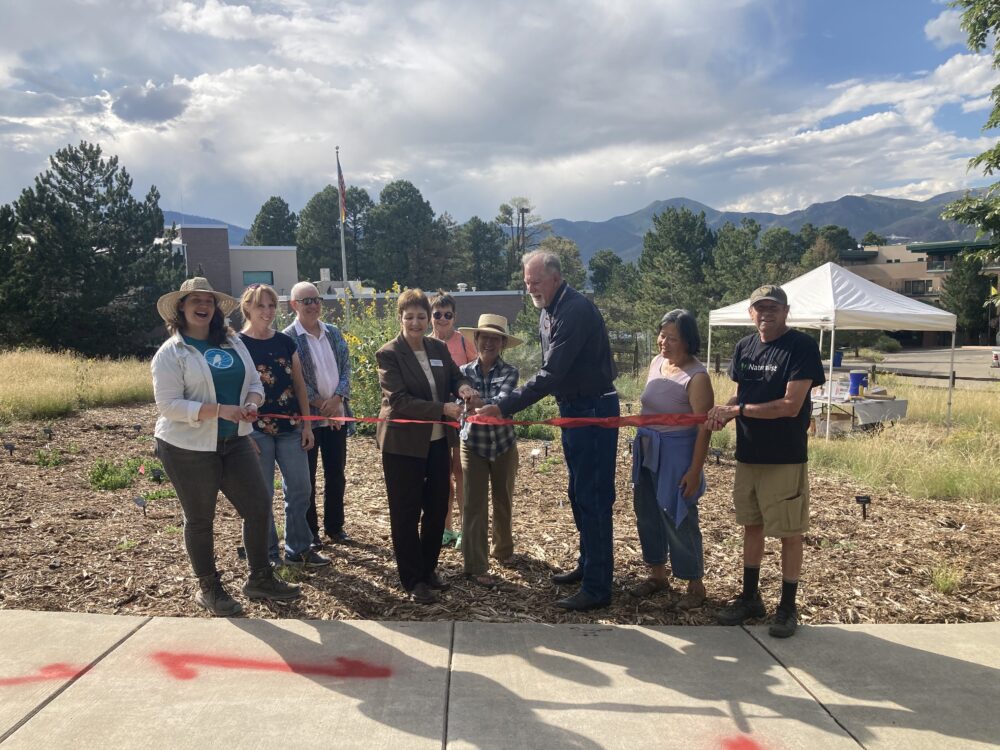

Pollinator Profiles
Each month we will be adding an in-depth profile of one of our local pollinators. Check back each month to see a new one!
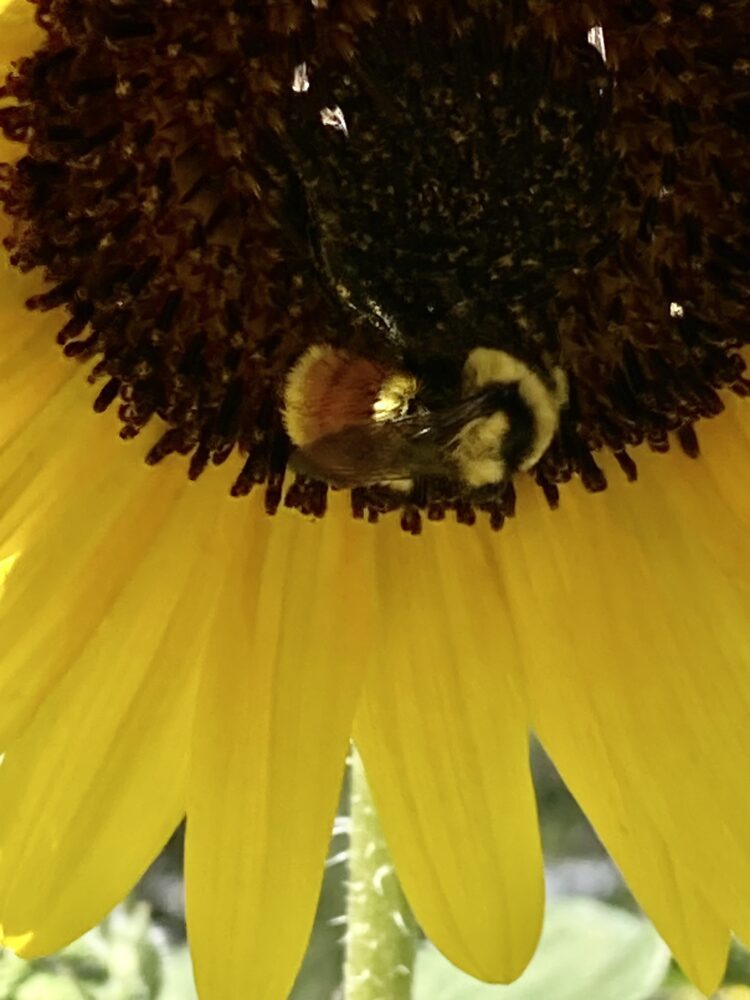

Hunt’s Bumblebee
Bombus huntii
If you’ve been paying attention to the bumblebees in your garden you have probably already seen a Hunt’s bumblebee at some point. Hunt’s bumblebees are common for our area and are quite distinct with an orange band around a yellow body. They are generalists in their plant nectar selections and will nectar at a variety of different plants growing in our area. The Hunt’s Bumblebee can be found in many different habitats, including prairies, scrubby desert areas, meadows, along roadsides, in gardens, and along streams. This species has experienced declines, but it is still one of the more common bees of western North America.
The Hunt’s bumblebee is a social insect, with a caste system of a queen and workers. The queen reproduces young and the workers raise the young and find food. This is similar to the social structure of honeybees. However, bumblebees have an annual life cycle, in which only the newly emerged fertilized queens survive the winter by hibernating underground (unlike honeybees who live for multiple years). In the spring, the queens emerge and search for a suitable nest site. The queens then lay eggs and rear the first batch of workers, who take over the tasks of foraging, nest maintenance, and brood care. The colony grows throughout the summer, producing more workers and eventually males and new queens. The males and new queens mate, and the old queen and workers die by the end of the season leaving only the new queen and her developing eggs to carry on the population.
The Hunt’s bumblebee is an important pollinator, commonly interacting with plants, such as yarrow, milkvetch, fireweed, purple prairie clover, cinquefoil, prairie sunflower, hairy golden aster, silky lupine, wild bergamot, goldenrods, western snowberry, and aster. They are also good pollinators of crop plants such as raspberries and tomatoes. However, the development of using them for commercial pollination of crops, poses a threat because this process can lead to the introduction of diseases, such as the deformed wing virus. They are also threatened by pesticides, habitat destruction, and lack of floral resources and nesting locations.
Long-Horned Bee
Genus Melissodes
Monarch Butterfly
Danaus plexippus
Pollinator Demo Garden Dedication Ceremony 09/10/2024
